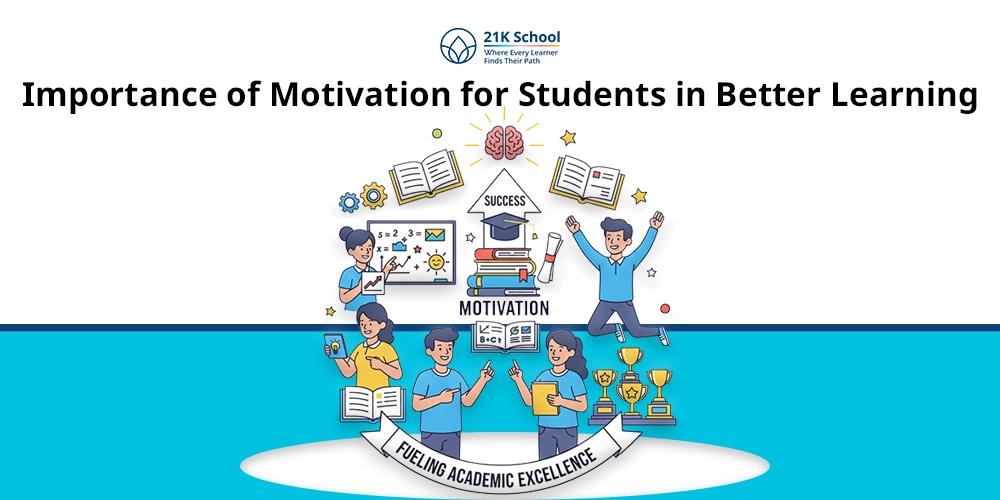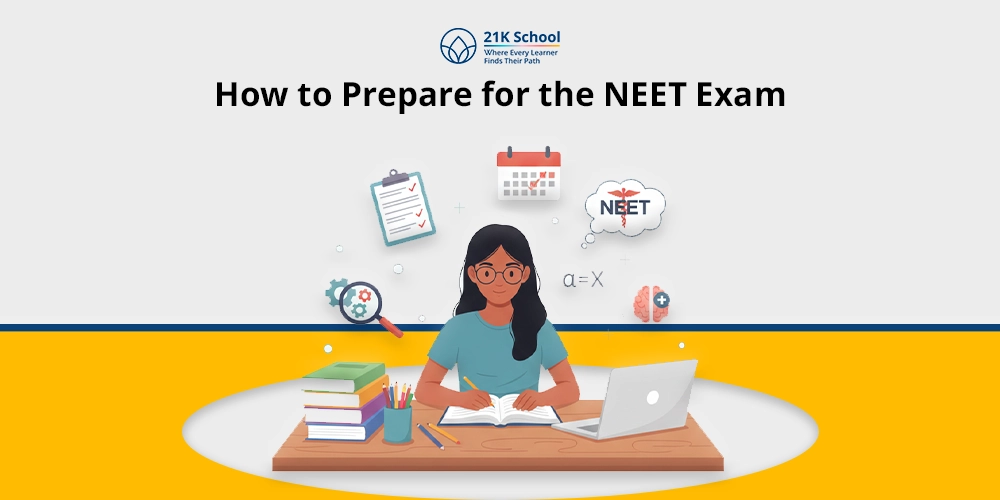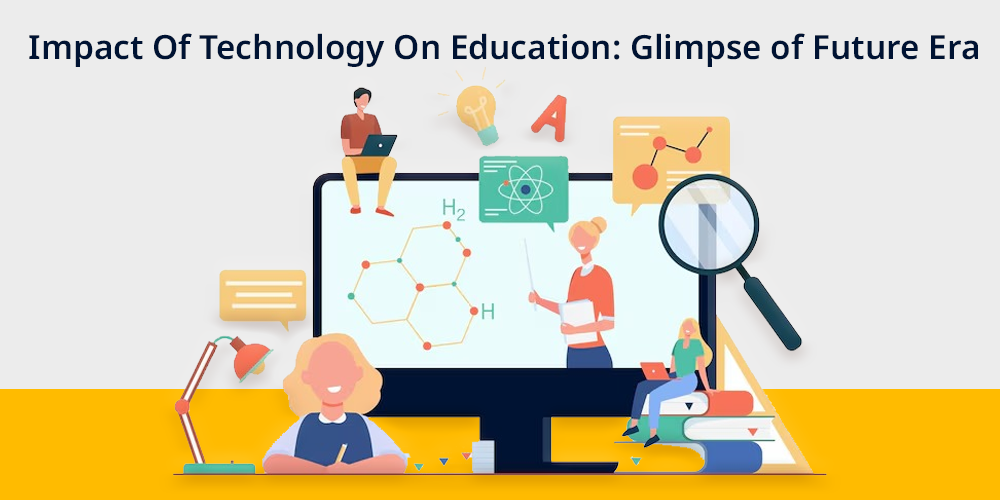
The integration of technology into education has changed the way of learning and teaching together.
In traditional education, learning was confined to four walls and a chalkboard but not now. It offers way more memorization in the classroom.
Today, with a tap or click, anyone can access vast knowledge, engage with interactive tools, and collaborate with peers worldwide.
Learn how the contribution of technology in education makes students’ lives easy and comfortable.
In the 21st century, the technologically advanced era is crucial to learn how these innovations have reshaped education, both positively and negatively.
In this guide one can explore the transformative journey of education in the digital age. Learn digital technology in education.
Also highlighting the advantages, technology drawbacks, emerging technologies, and future possibilities.
Table of Contents
- Technology in Traditional Education Vs Modern Education
- Positive Impacts of Technology on Education
- Negative Impacts of Technology on Education
- Top Technologies Transforming Today’s Education
- Impact of Technology in Online Schools Education
- Real-World Examples of Impacts of Technology on Education
- Conclusion
Technology in Traditional Education Vs Modern Education

With time the shift in technology and education makes everything curious. From traditional education to modern learning the impact of technology is both positive and negative.
To understand technology integration one needs to know everything about technology in traditional education vs modern education
Traditional education is based on teacher-led instruction, textbooks, and limited technology where memorizing is the only option for students.
On the other hand, modern education incorporates digital tools, interactive platforms, future technology and personalized learning experiences.
Today technology allows for two-way communication, encourages active participation, and fosters a culture of lifelong learning beyond classroom boundaries.
Read on to learn more about the role of technology in education and how it benefits learning.
Positive Impacts of Technology on Education
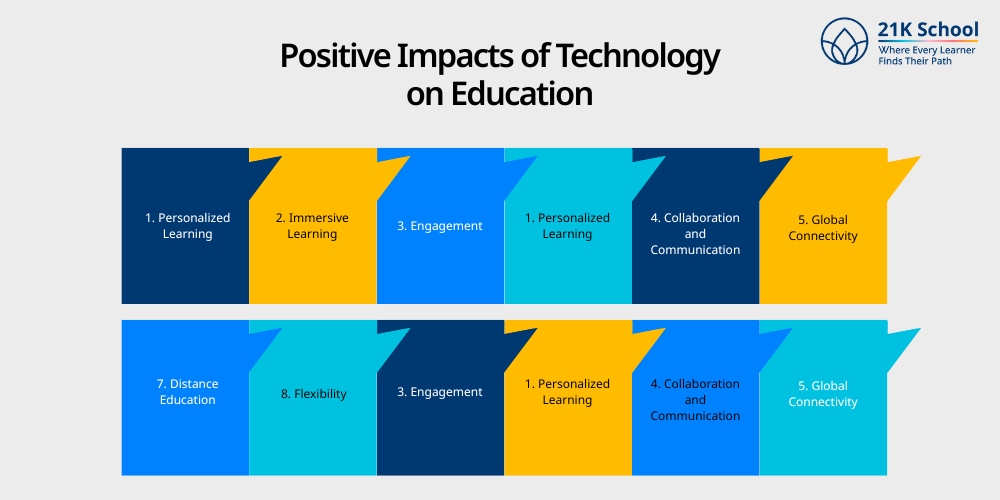
Technology enhances education by making learning more engaging, accessible, and personalized. Over time, more people are recognizing its positive impact and adopting best practices to maximize learning outcomes and achieve success in digital education.
Here’s positive impacts of technology in education:
1. Personalized Learning
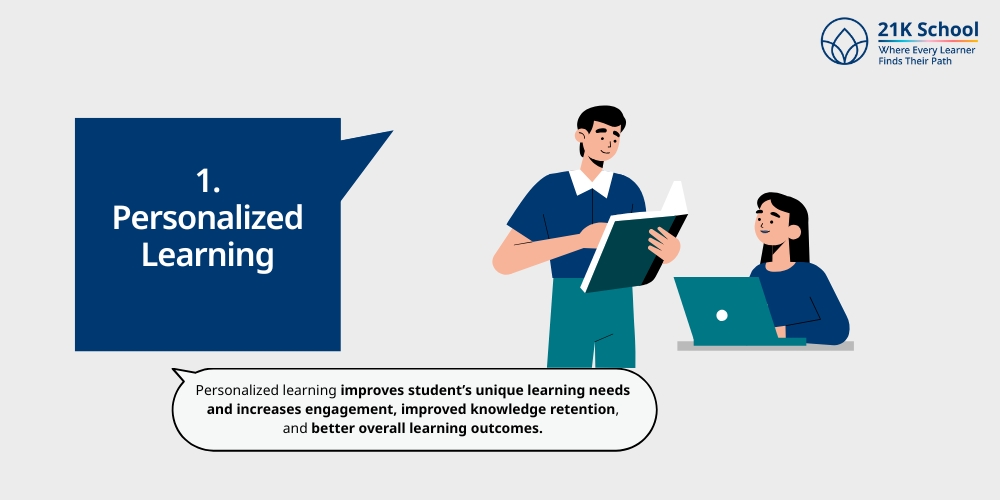
Personalized learning improves student’s unique learning needs and increases engagement, improved knowledge retention, and better overall learning outcomes.
Technology helps teachers make content to suit students’ learning styles. AI algorithms lead to students’ progress and adjust difficulty levels.
Explore the benefits of personalized learning
2. Immersive Learning
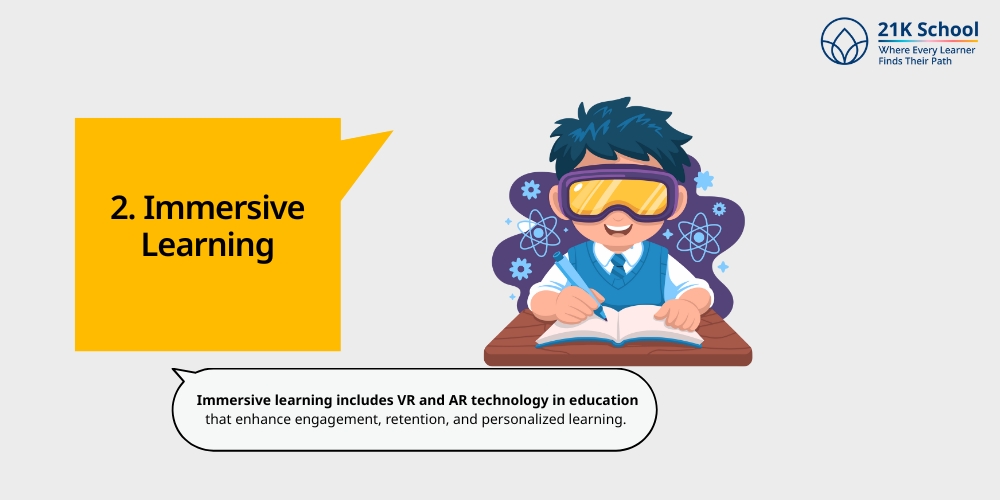
Immersive learning includes VR and AR technology in education that enhance engagement, retention, and personalized learning.
Students can now learn from interactive 3D environments. For example, biology students can discover parts of the human body in detail.
3. Engagement
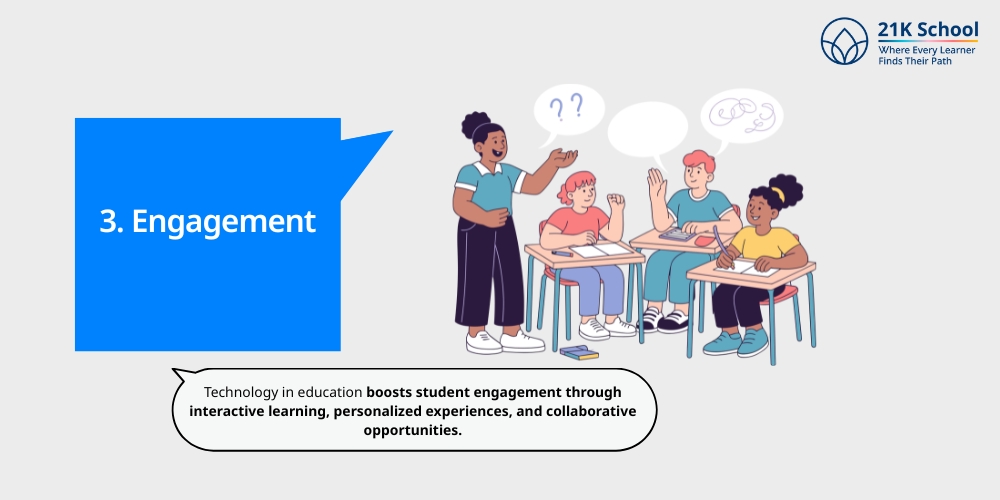
Technology in education boosts student engagement through interactive learning, personalized experiences, and collaborative opportunities
This means it ultimately leads to increased motivation and improved learning results. It makes learning more dynamic, accessible, and relevant.
4. Collaboration and Communication
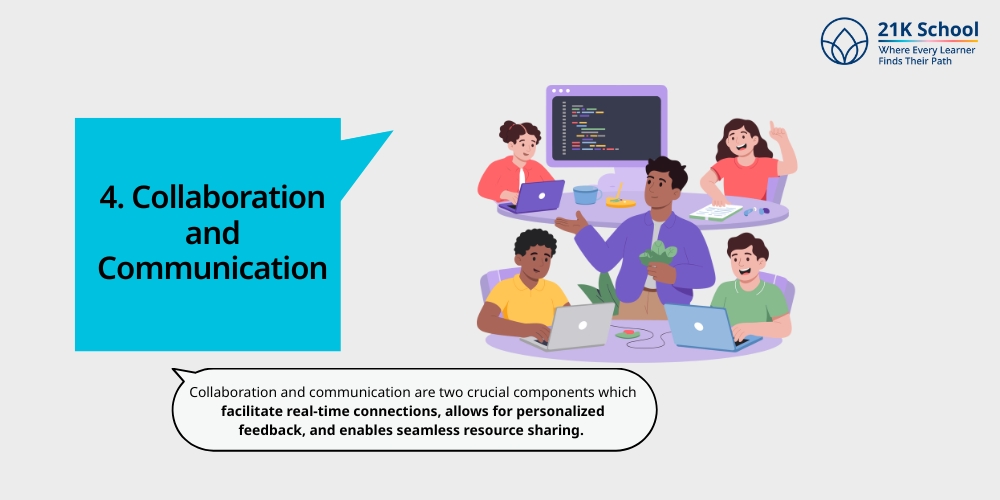
Collaboration and communication are two crucial components which facilitate real-time connections, allows for personalized feedback, and enables seamless resource sharing.
Technology helps in seamless collaboration between teachers, students and parents in needed their various tools like Zoom, Meet etc.
5. Global Connectivity
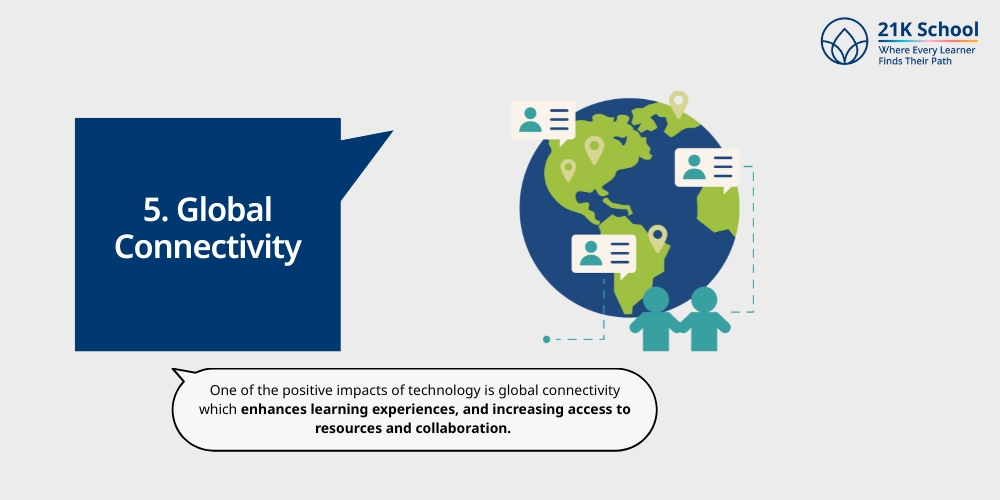
One of the positive impacts of technology is global connectivity which enhances learning experiences, and increasing access to resources and collaboration.
Students can now easily connect with students across the world. Not only connect, even participate in international projects, and access resources from global institutions.
Also read: how does technology impact collaboration among students in group projects
6. Access to Information
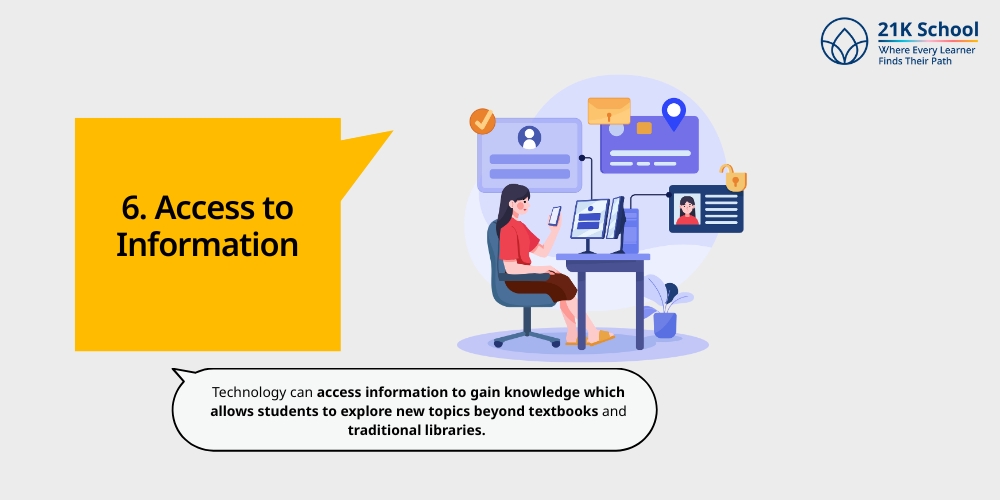
Technology can access information to gain knowledge which allows students to explore new topics beyond textbooks and traditional libraries.
Search engines, digital libraries, and online courses are some common ways students can go with. This makes online courses affordable.
7. Distance Education
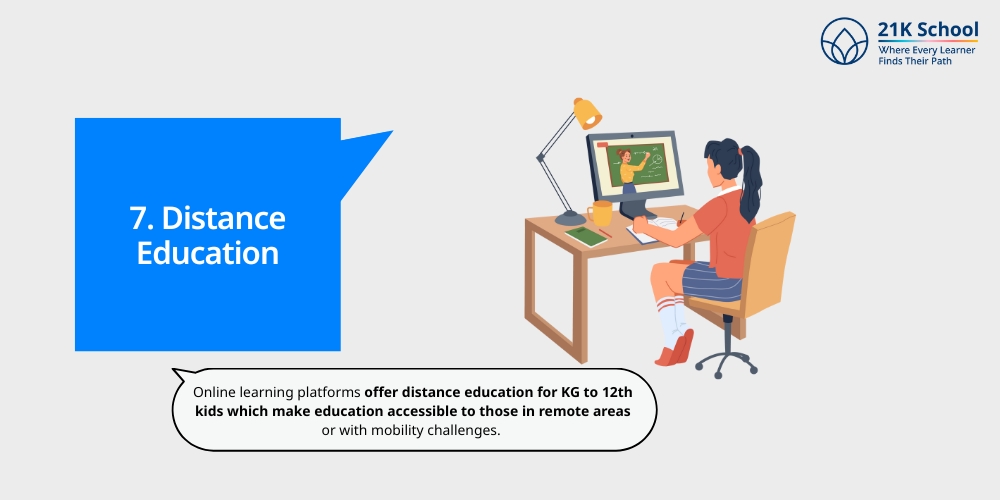
Online learning platforms offer distance education for KG to 12th kids which make education accessible to those in remote areas or with mobility challenges.
Problems like COVID-19 pandemic highlighted the importance of distance learning and allowed us to learn without any huddle. Choose the right online platform to enhance learning.
8. Flexibility
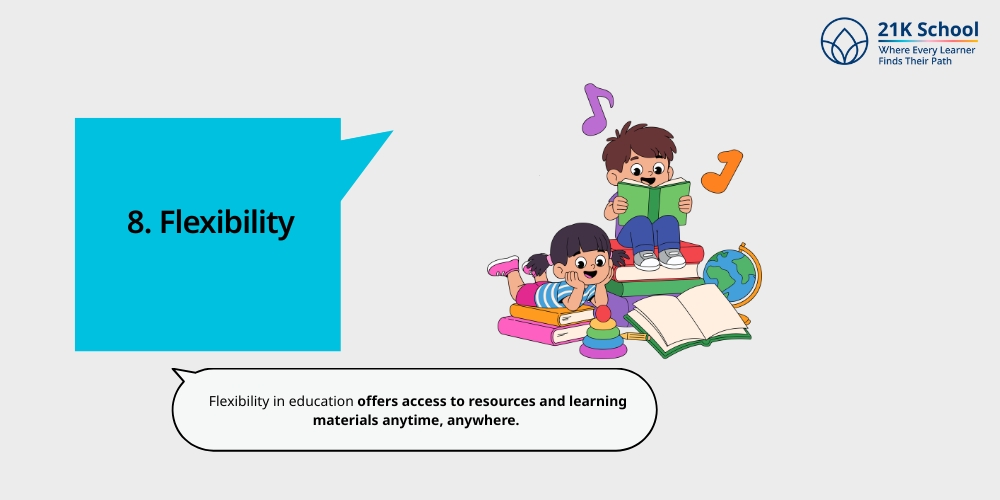
Flexibility in education offers access to resources and learning materials anytime, anywhere.
With the help of recorded lectures, mobile apps, or e-books, learning has become easy and flexible to enhance lifestyle.
9. Accessibility
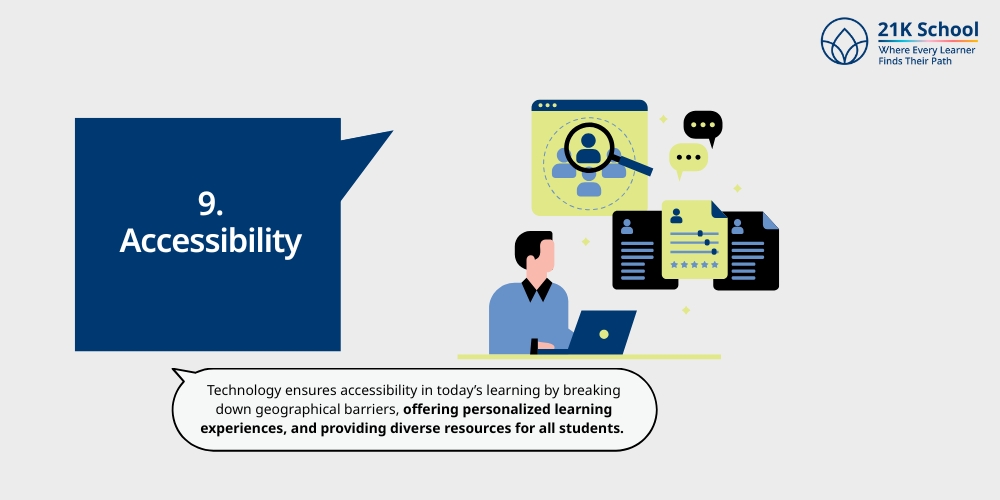
Technology ensures accessibility in today’s learning by breaking down geographical barriers, offering personalized learning experiences, and providing diverse resources for all students.
It is also highly effective for students with disabilities. It helps everyone to participate in various activities, competitions and tasks.
10. Deeper Exploration of Complex Topics
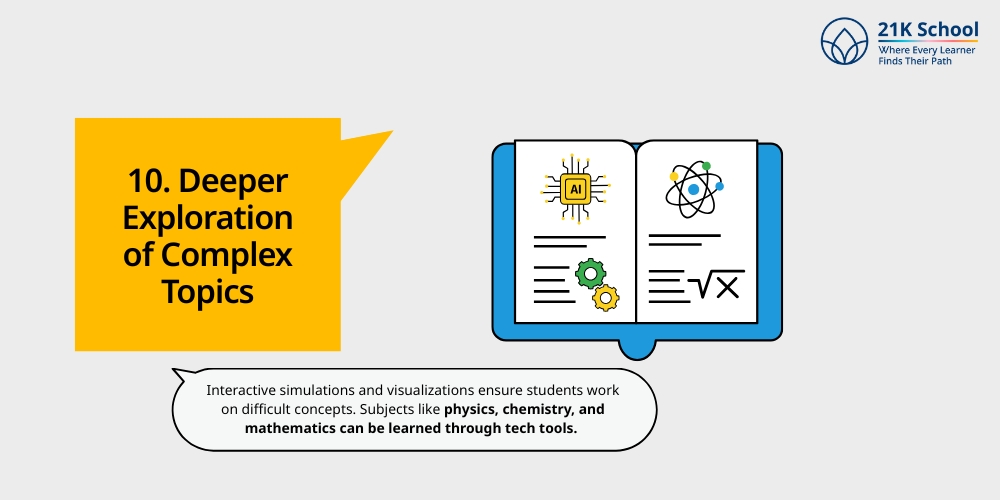
Technology has several positive impacts on education such as deeper exploration of complex topics.
Interactive simulations and visualizations ensure students work on difficult concepts. Subjects like physics, chemistry, and mathematics can be learned through tech tools.
This enhances understanding and reduces learning anxiety.
11. Preparation for the Future
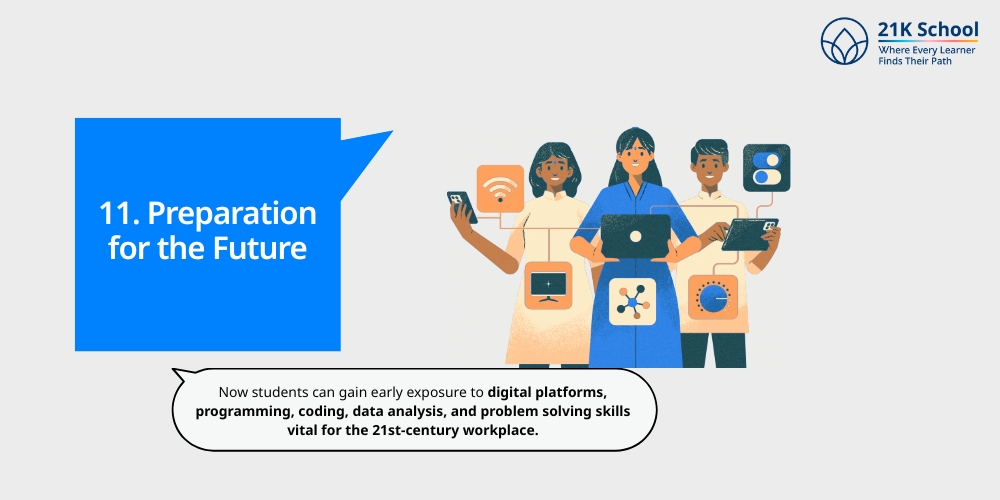
With time technology comes up with new innovations and updates which helps in the preparation for the future education.
Technological literacy is important in today’s job market. This can be done by using tech tools in education.
Now students can gain early exposure to digital platforms, programming, coding, data analysis, and problem solving skills vital for the 21st-century workplace.
12. Personalized Feedback and Assessment
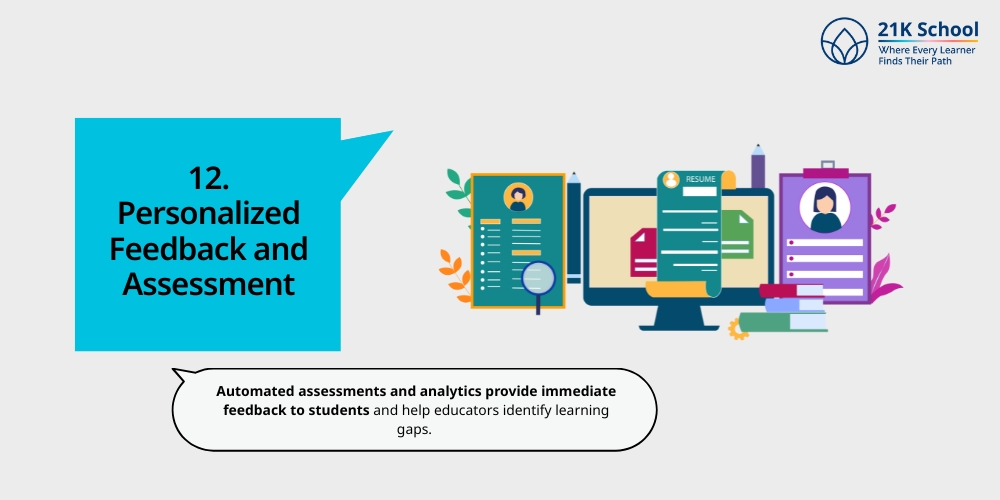
When it comes to personalized feedback and assessment technology provides significant benefits.
Automated assessments and analytics provide immediate feedback to students and help educators identify learning gaps. This allows for timely interventions and improved learning outcomes.
Negative Impacts of Technology on Education
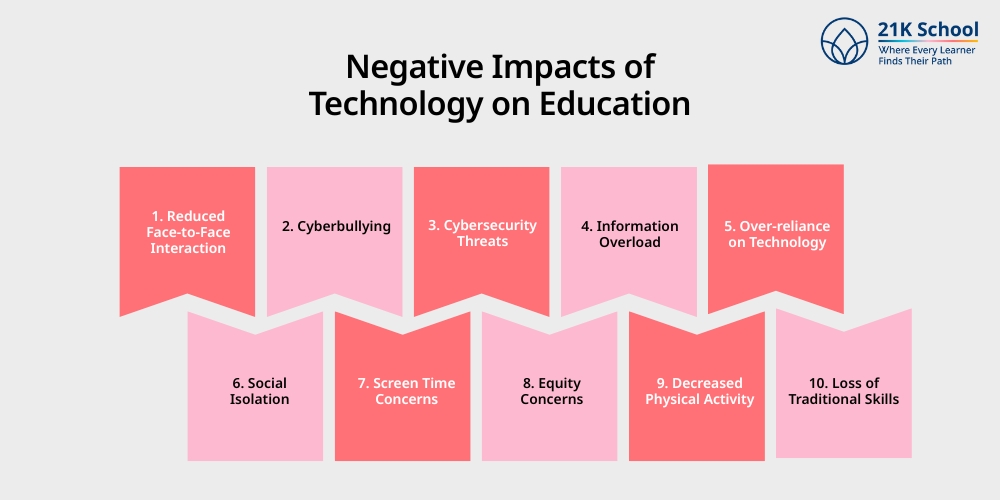
While technology has transformed education in many positive ways, it also brings along challenges that can hinder learning if not addressed properly.
As digital tools become more prevalent in classrooms, it’s crucial to be aware of their potential downsides and take steps to minimize their negative impact on students’ academic and personal development.
Here are some negative impacts of technology in education:
1. Reduced Face-to-Face Interaction
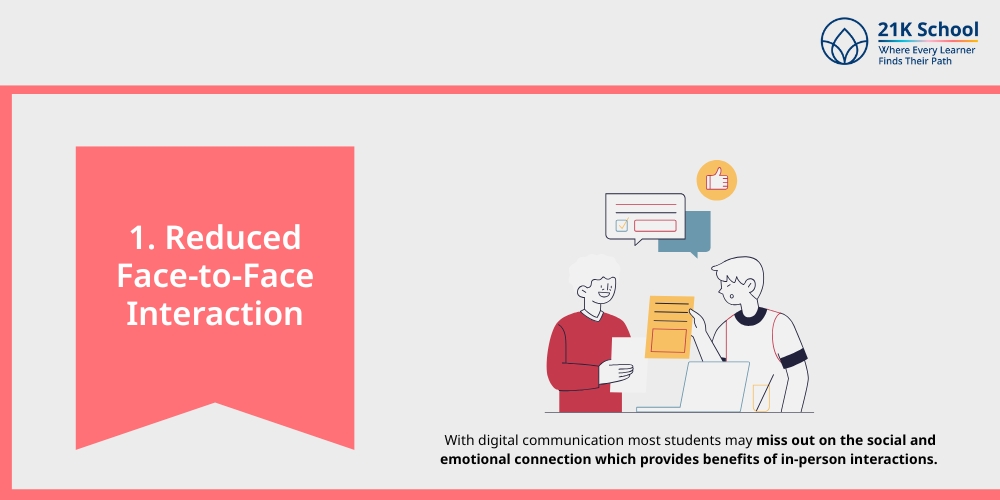
One of the major concerns of online learning through technology is reduced face-to-face interaction.
With digital communication most students may miss out on the social and emotional connection which provides benefits of in-person interactions.
This can affect their interest, teamwork and collaborative learning empathy, and relationship-building.
2. Cyberbullying
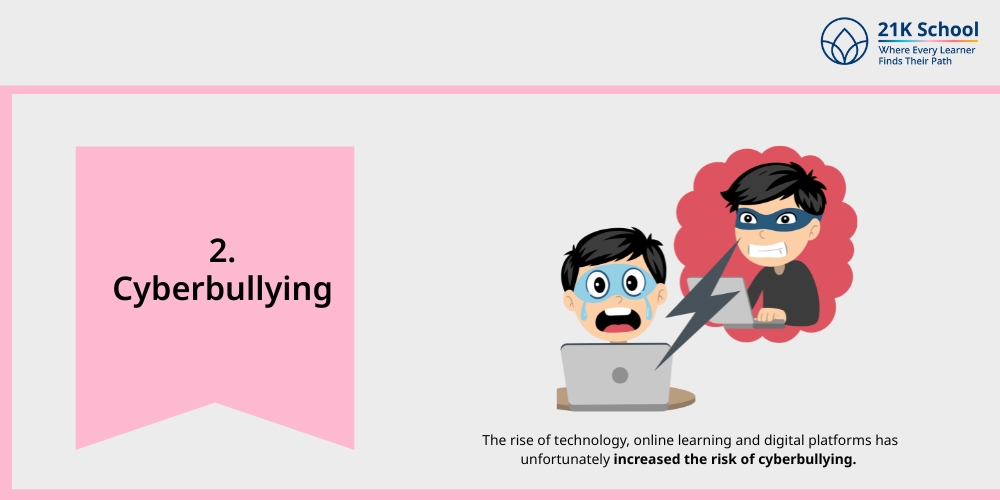
The rise of technology, online learning and digital platforms has unfortunately increased the risk of cyberbullying.
Lot of students are facing different kinds of harassment online which affect their mental well-being and academic achievements.
3. Cybersecurity Threats
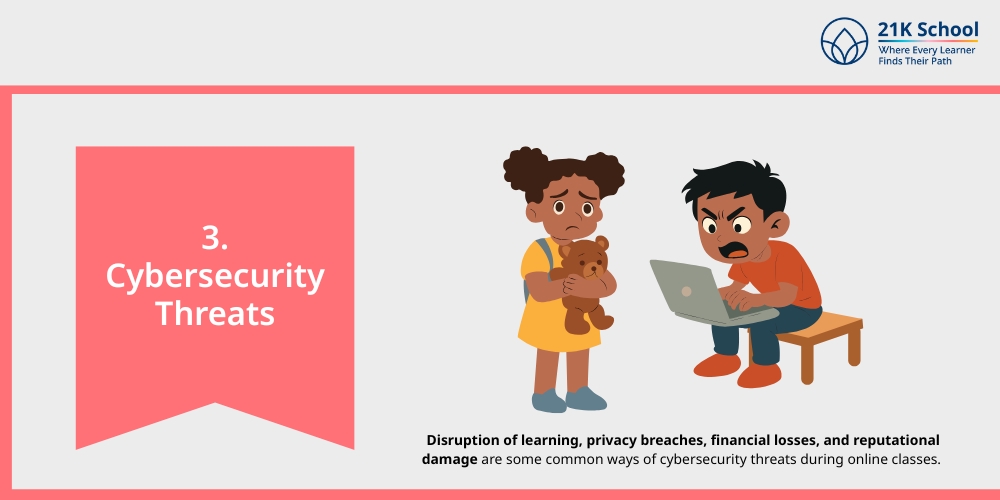
Disruption of learning, privacy breaches, financial losses, and reputational damage are some common ways of cybersecurity threats during online classes.
Various sensitive data publicly available leads to insecurity and makes students uncomfortable and increases anxiety.
4. Information Overload
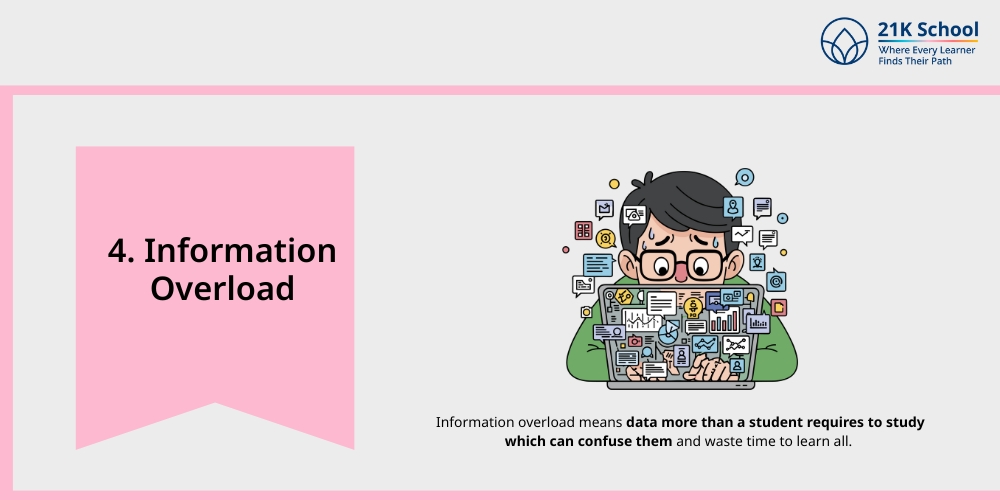
Information overload means data more than a student requires to study which can confuse them and waste time to learn all.
This can negatively impact education by hindering student learning, increasing exam stress and anxiety, and potentially affecting cognitive development.
5. Over-reliance on Technology
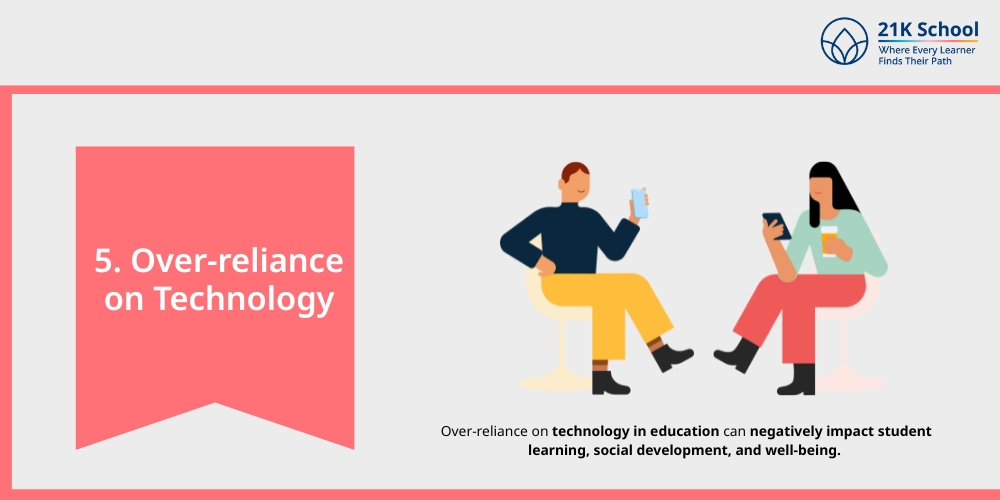
Over-reliance on technology in education can negatively impact student learning, social development, and well-being.
This means it can decrease in critical thinking, problem-solving, and social skills, as well as potential mental and physical health issues related to prolonged screen time.
6. Social Isolation
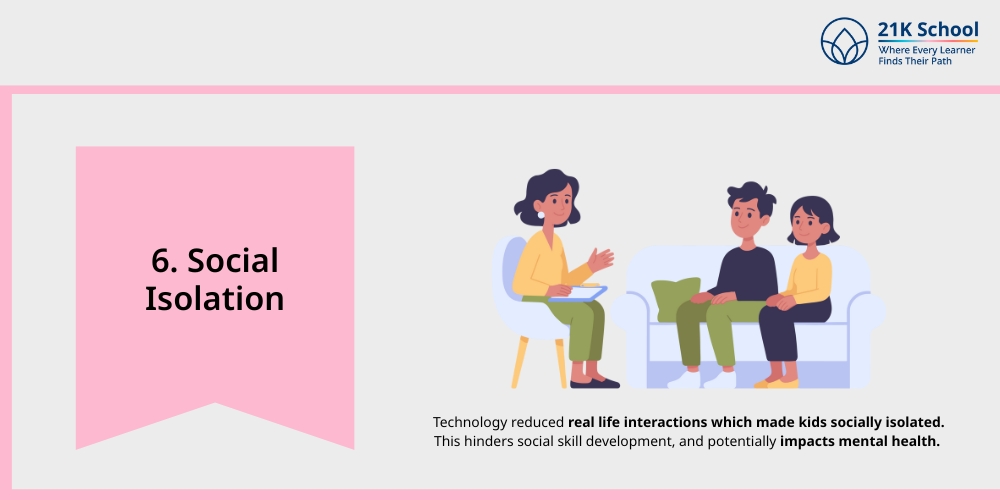
Technology reduced real life interactions which made kids socially isolated. This hinders social skill development, and potentially impacts mental health.
Increased screen time and lack of real-world interactions can lead to feelings of loneliness. This particularly happens in remote learning environments.
7. Screen Time Concerns
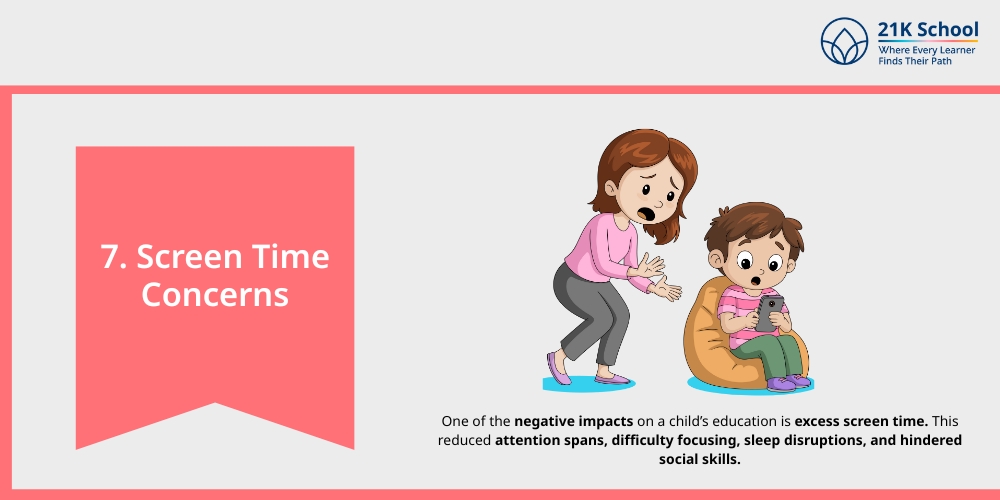
One of the negative impacts on a child’s education is excess screen time. This reduced attention spans, difficulty focusing, sleep disruptions, and hindered social skills.
8. Equity Concerns
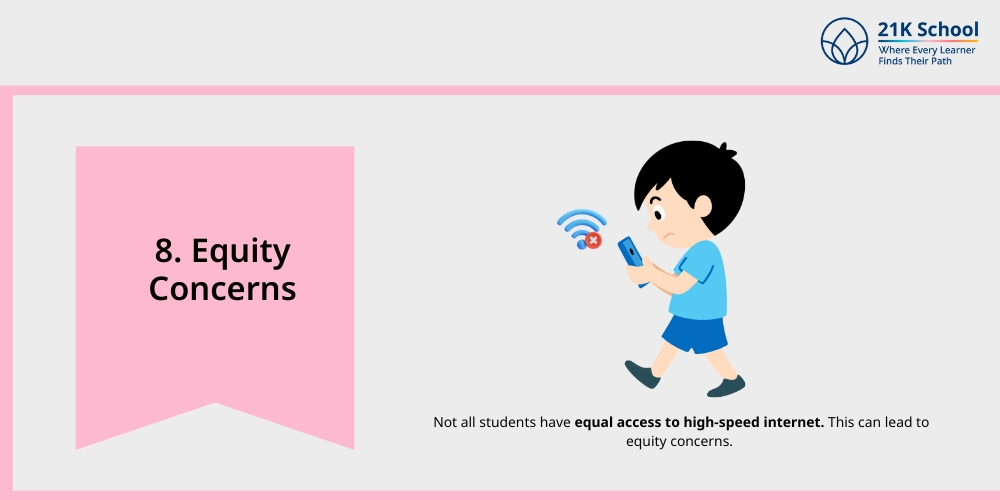
Not all students have equal access to high-speed internet. This can lead to equity concerns.
One major concern is the digital divide, where unequal access to devices and reliable internet can leave some students behind, exacerbating existing inequalities.
9. Decreased Physical Activity
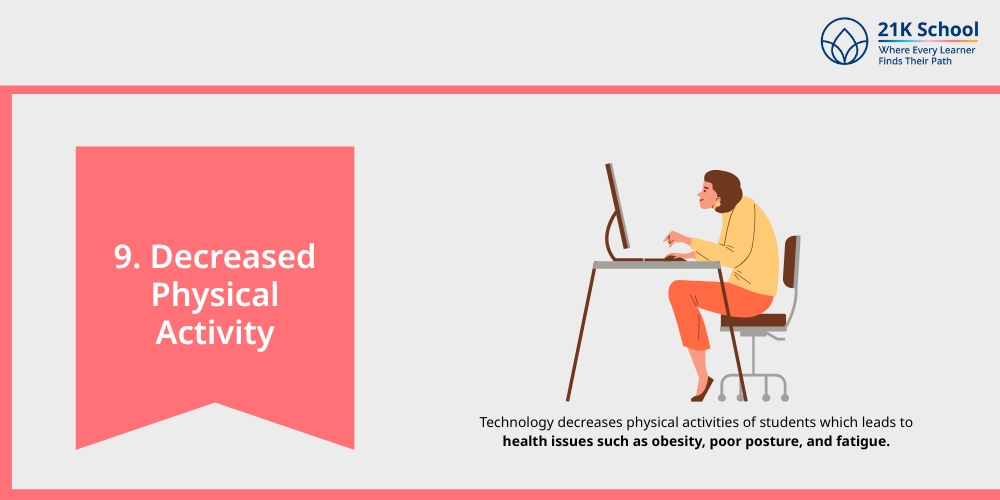
Technology decreases physical activities of students which leads to health issues such as obesity, poor posture, and fatigue.
Skills like fine motor skills and gross motor skills activities to overcome the problem of physical activity.
10. Loss of Traditional Skills
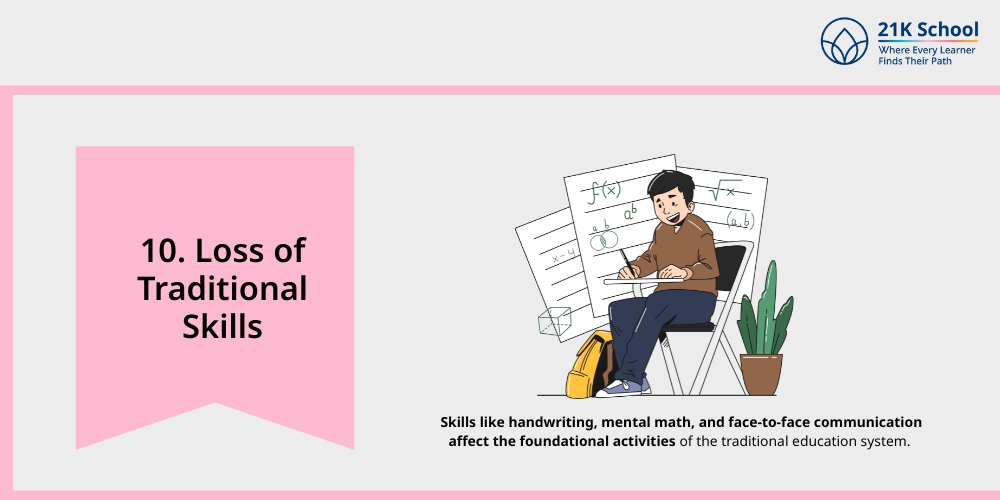
Over-reliance on technology in education can negatively impact students’ development of certain traditional skills.
Skills like handwriting, mental math, and face-to-face communication affect the foundational activities of the traditional education system.
Top Technologies Transforming Today’s Education
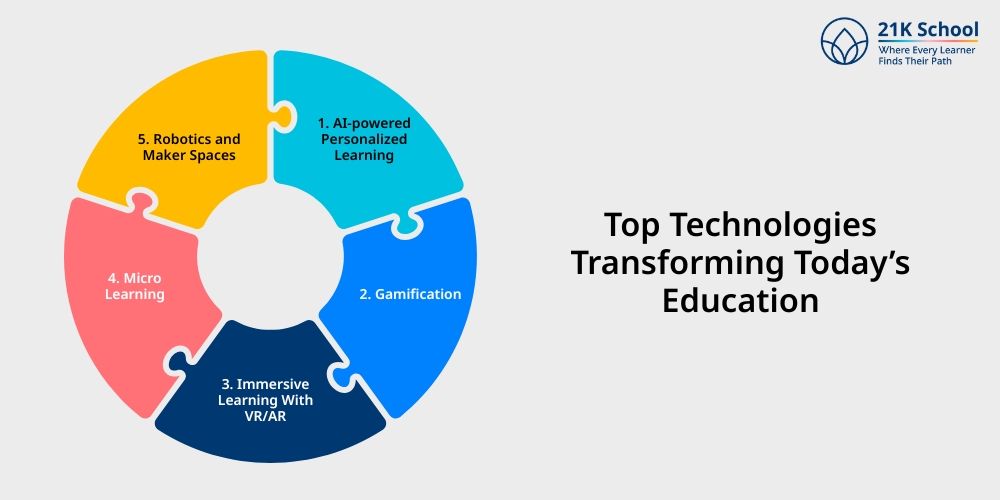
With growing technology integration individuals look for new ways to use technology for betterment. From AI to robotics everything at one place.
These help in student engagement, personalize learning experiences, and make education more accessible.
Let’s elaborate each for better understanding:
1. AI-powered Personalized Learning
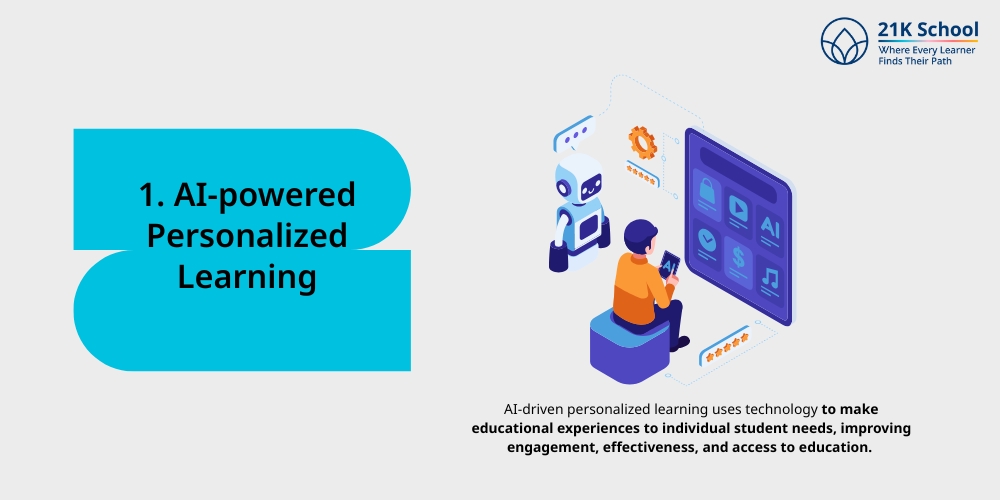
AI-driven personalized learning uses technology to make educational experiences to individual student needs, improving engagement, effectiveness, and access to education.
It helps in analysis of the data and other information from student performance which guide teachers to customize curriculum, resources, and assignments in real-time.
2. Gamification
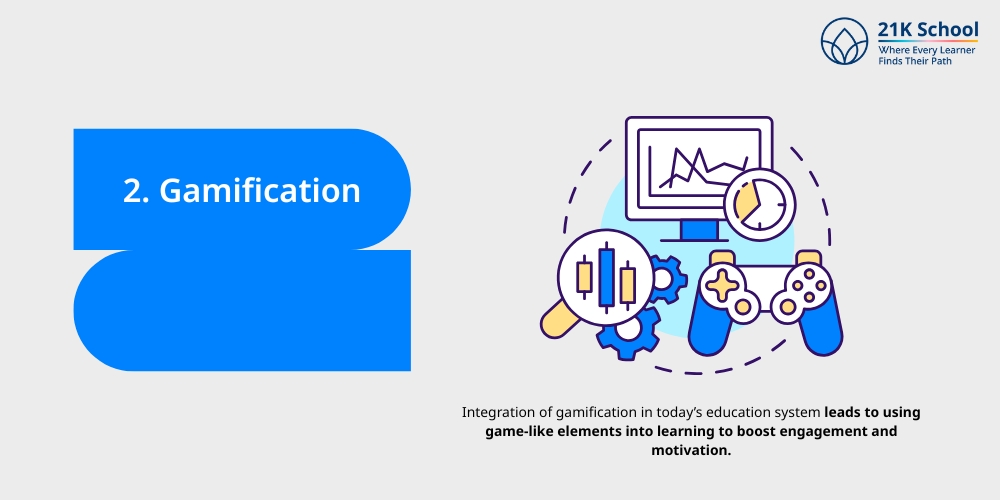
Integration of gamification in today’s education system leads to using game-like elements into learning to boost engagement and motivation.
There are different technologies available like Kahoot!, Duolingo, and Classcraft which used to create unique and engaging learning experiences.
3. Immersive Learning With VR/AR
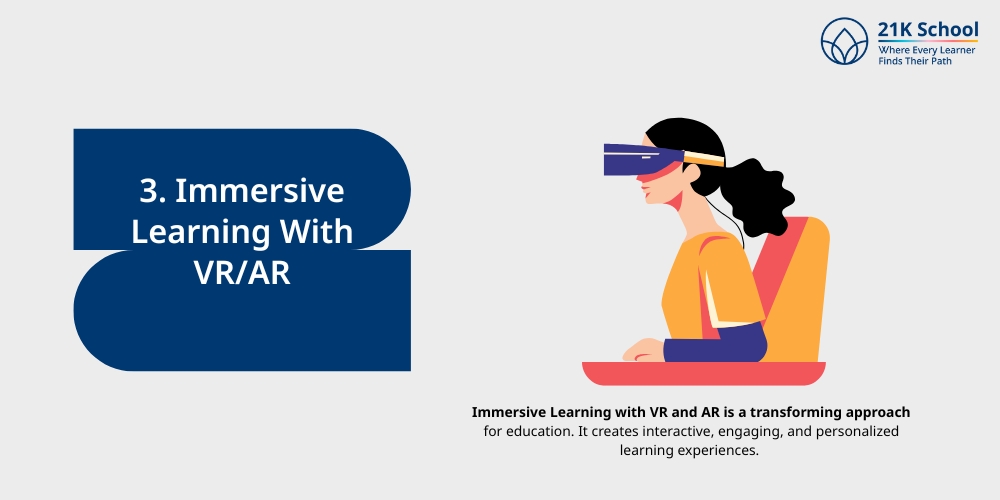
Immersive Learning with VR and AR is a transforming approach for education. It creates interactive, engaging, and personalized learning experiences.
Now students can discover new concepts in a more hands-on, real-world way. It fosters deeper understanding and retention.
4. Micro Learning
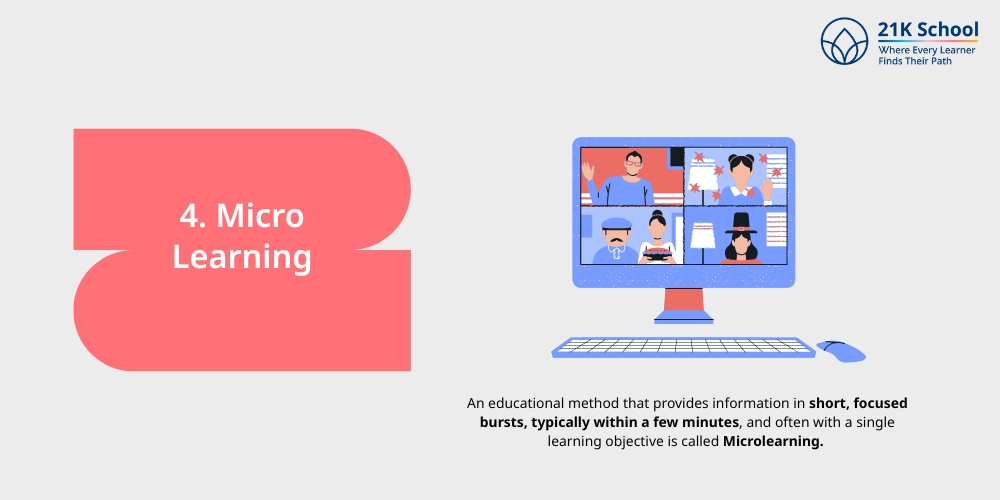
An educational method that provides information in short, focused bursts, typically within a few minutes, and often with a single learning objective is called Microlearning.
Key technologies leading this change are mobile learning, smart learning systems using AI, and interactive videos and graphics. Explore the benefits of microlearning in higher education
5. Robotics and Maker Spaces
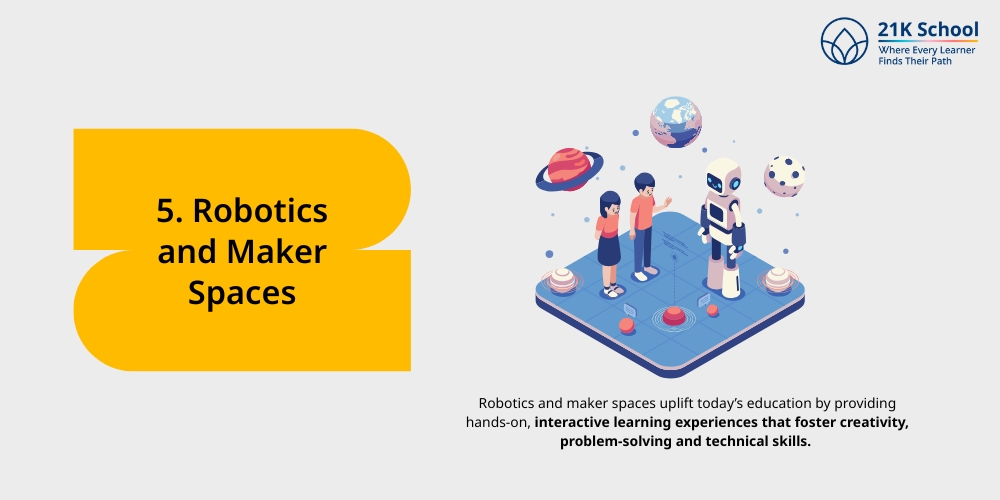
Robotics and maker spaces uplift today’s education by providing hands-on, interactive learning experiences that foster creativity, problem-solving and technical skills.
It offers opportunities to build, code, and create projects through technologies and STEM education. This motivates creativity, problem-solving, and innovation from a young age.
Impact of Technology in Online Schools Education
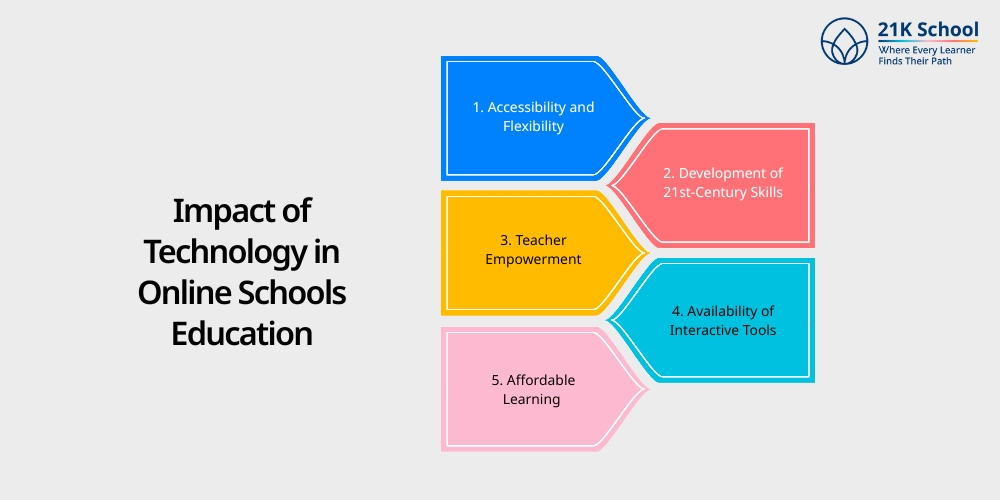
A significant impact of technology in online schools education which enhances accessibility, engagement, and personalization.
Understand why teachers, students and parents choose online schools education instead of traditional:
1. Accessibility and Flexibility

Technology provides accessibility and flexibility in online education. Various platforms like 21K school remote learning opportunities to fulfill students and teachers needs.
Accessibility comes from recorded lectures, doubt sessions and flexibility allows students to learn at their own pace, schedule.
2. Development of 21st-Century Skills
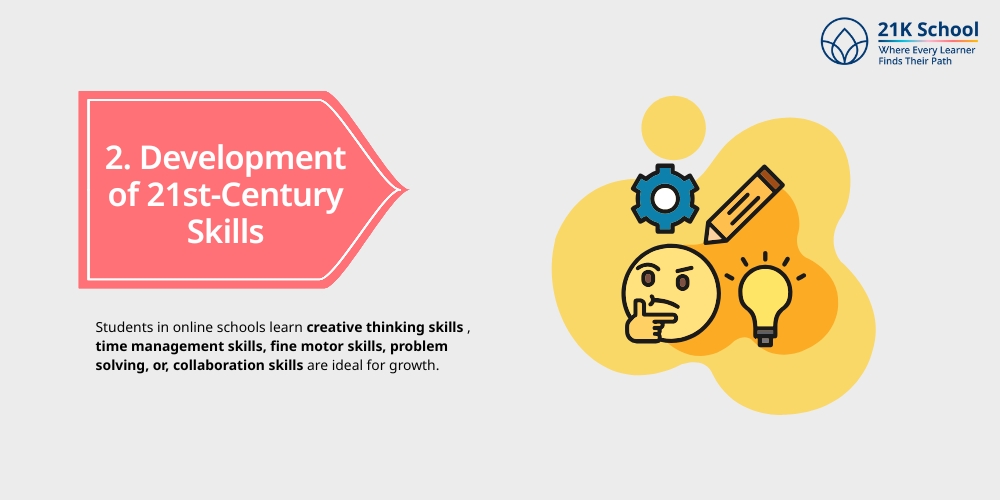
Technology development of 21st-Century Skills is crucial for students to concur future growth.
Students in online schools learn creative thinking skills , time management skills, fine motor skills, problem solving, or, collaboration skills are ideal for growth.
3. Teacher Empowerment
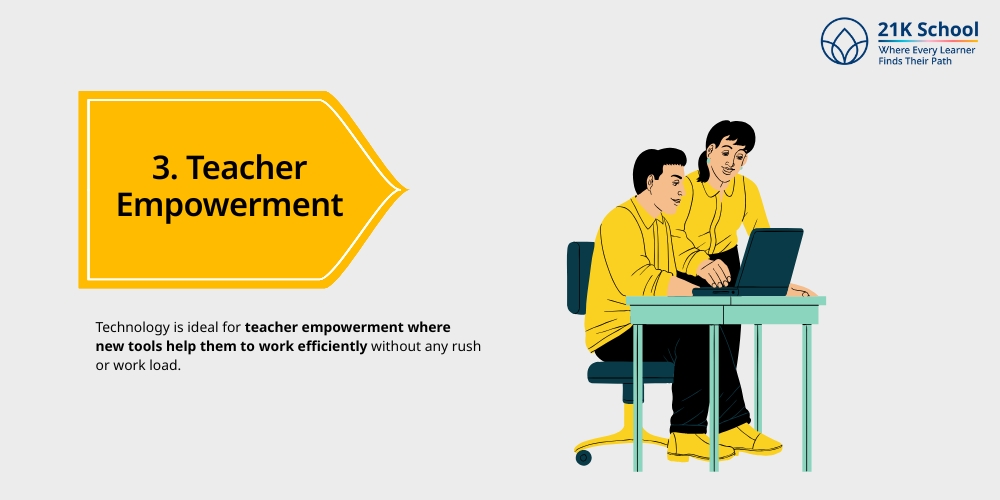
Technology is ideal for teacher empowerment where new tools help them to work efficiently without any rush or work load.
It tracks students progress, delivers content, and engages them in activities. Professional development platforms support continuous learning for teachers.
4. Availability of Interactive Tools
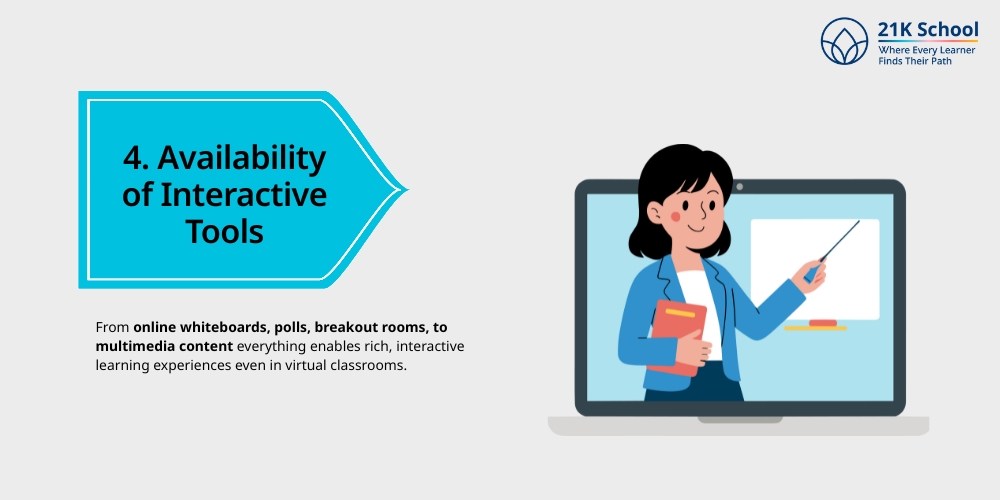
Technology in education ensures availability of interactive tools which is essential for students’ development.
From online whiteboards, polls, breakout rooms, to multimedia content everything enables rich, interactive learning experiences even in virtual classrooms.
5. Affordable Learning
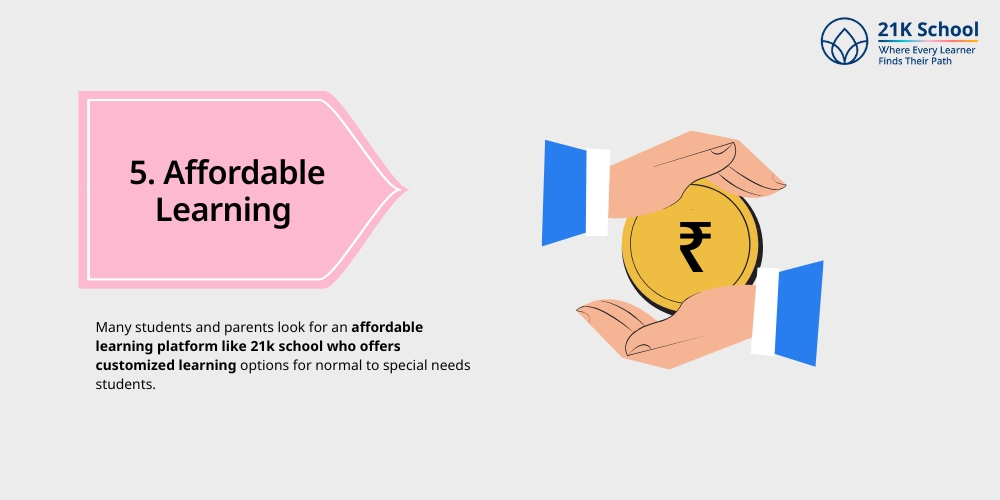
Many students and parents look for an affordable learning platform like 21k school who offers customized learning options for normal to special needs students.
Understand the education for online learning for special needs students .
By eliminating costs associated with commuting, housing, and printed materials, online education becomes more cost-effective. This helps democratize access to quality education.
Real-World Examples of Impacts of Technology on Education
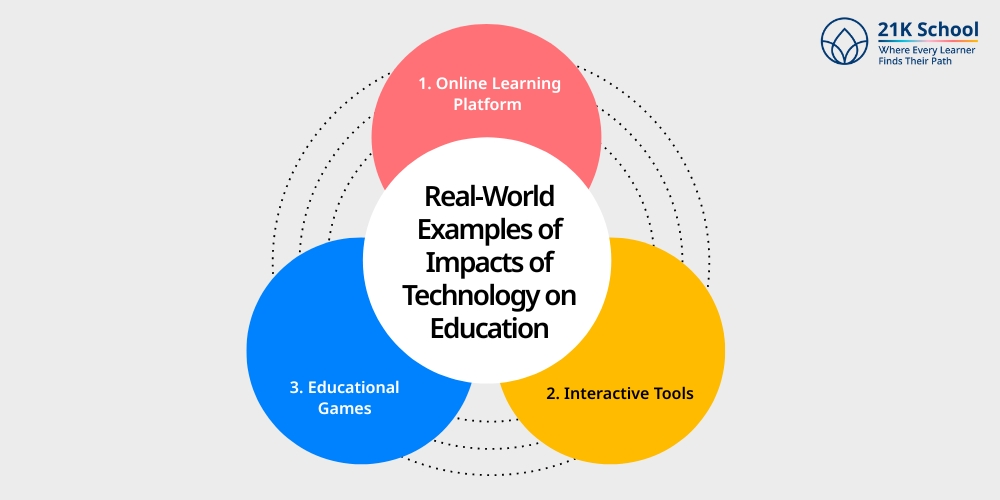
Technology is an important part of education. To understand it properly here are some real-world examples of how technology impacts education:
1. Online Learning Platform
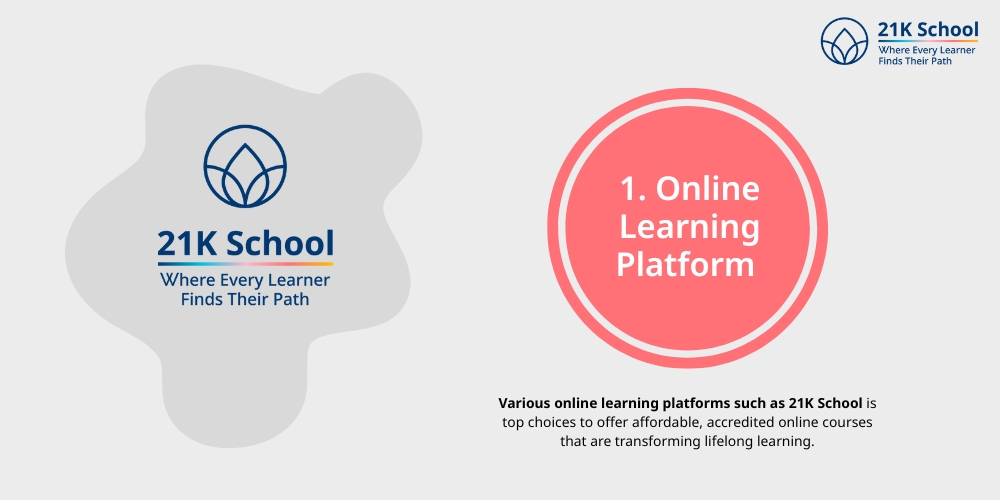
Various online learning platforms such as 21K School is top choices to offer affordable, accredited online courses that are transforming lifelong learning.
2. Interactive Tools
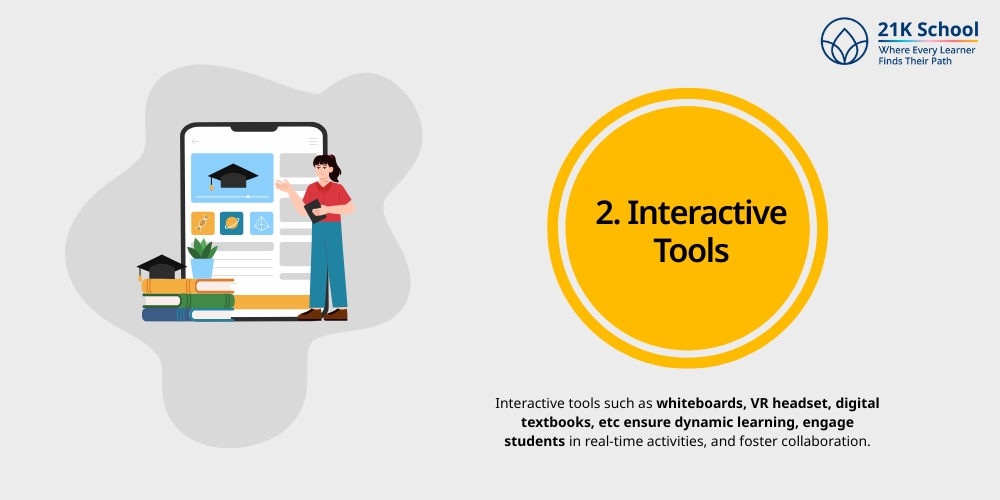
Interactive tools such as whiteboards, VR headset, digital textbooks, etc ensure dynamic learning, engage students in real-time activities, and foster collaboration.
3. Educational Games
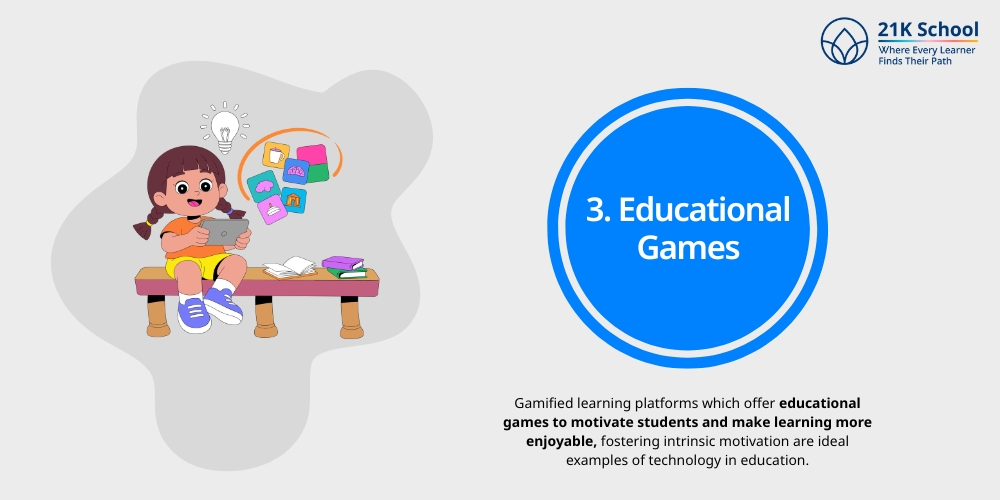
Gamified learning platforms which offer educational games to motivate students and make learning more enjoyable, fostering intrinsic motivation are ideal examples of technology in education.
Looking for something unique for your kids education game based learning is a must read blog.
Explore about advantages and disadvantages of technology in education.
Conclusion
Technology is a bonus for today’s education system. It is not wrong to say that technology in education is reshaping and enhancing the world.
The benefits of technology are transformative, from personalized learning and global access to enhanced engagement. It’s crucial to address the need for technology in the 21st century.
The key to success in education depends on teachers, administration, and technology who work together to build an inclusive, future-ready education system.
As we move deeper into the future era, the scope of educational technology will continue to grow and expand.
By reading this blog one can understand how technology can support students success .
Technology promises a world where learning is more engaging, equitable, and effective. Remember, the future classroom always has open doors to new opportunities.

